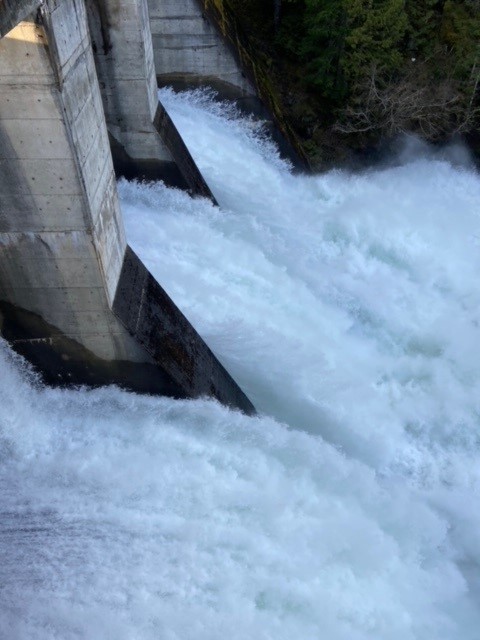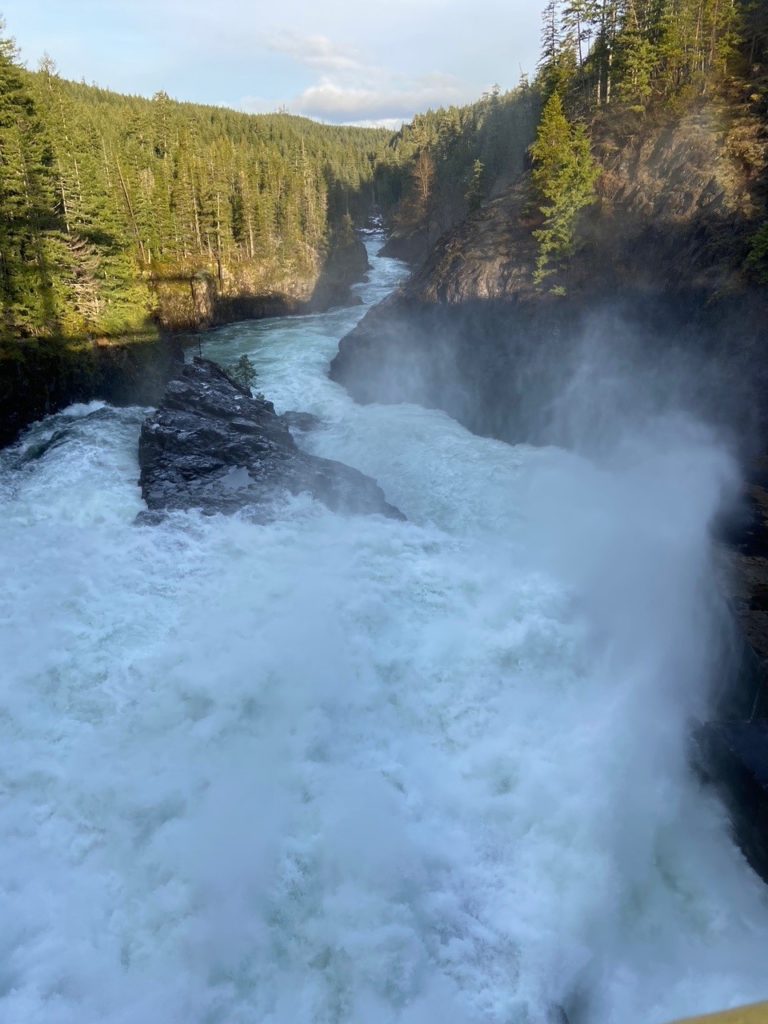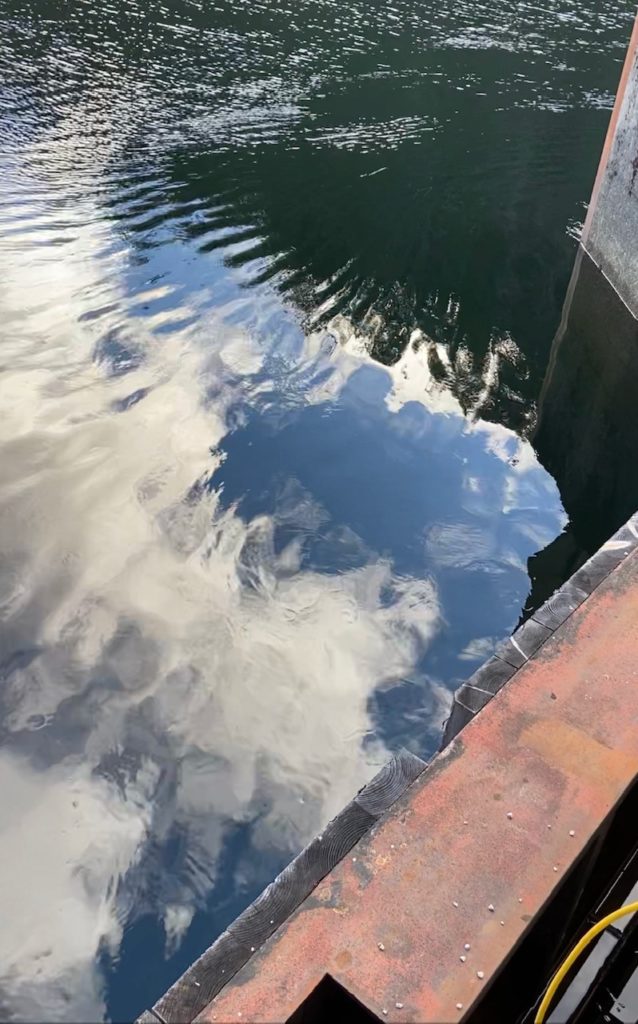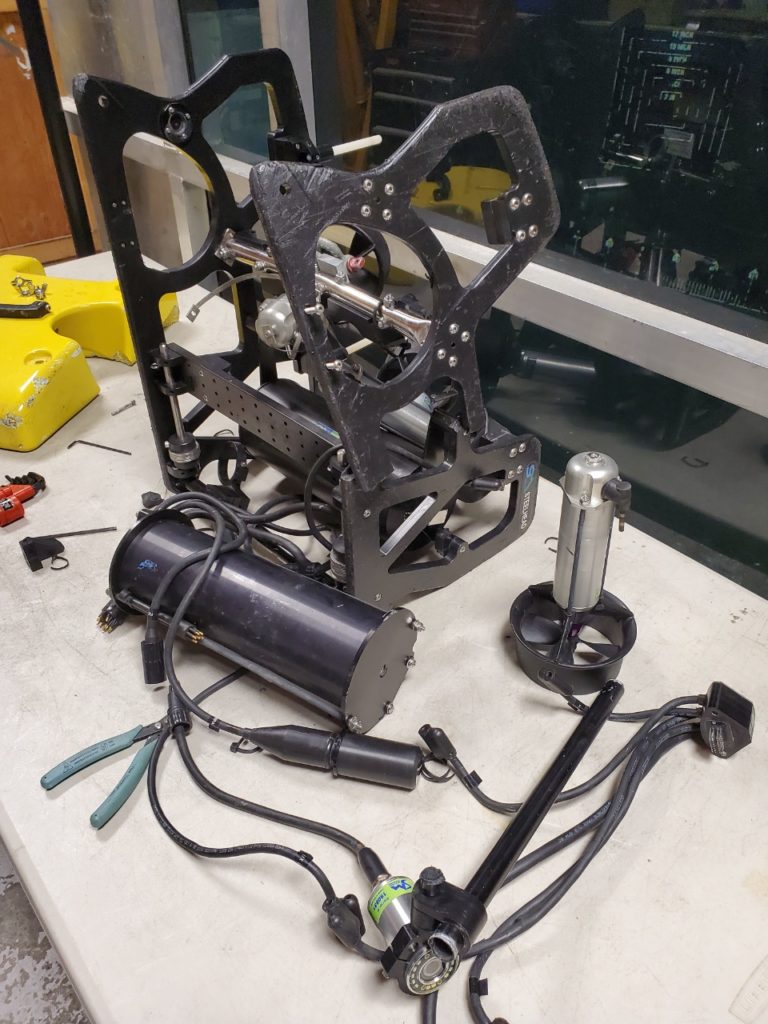SAVING DIVERS’ LIVES… ONE ROV AT A TIME


The SEAMOR Steelhead ROV inspects Canadian hydro-electric dam’s water intake trash racks for debris at 27 metre depth and (barely) survives extremely dangerous water flow surge.
BC Hydro Dam Intake Inspection, Campbell River, British Columbia, Canada
Accidents happen, as we all know. As an ROV manufacturer, when an accident befalls one of our vehicles, our first thought is often – thank goodness there wasn’t a diver involved. Indeed, the decision to purchase an ROV is often spurred by a diver injury or fatality. At hydro-electric plants, what appears as calm water at the surface can be a raging and highly localized current below. (See image below.)*
Situation
On a cold, wet day in February 2022 there was an urgent intake inspection required at the BC Hydro Ladore Dam facility at Campbell River on Vancouver Island – a common scenario in the industry. At the time, the generators were shut down for maintenance. The trash racks, which protect the water intakes and turbines from debris such as logs, were due for inspection.
Problem
The first rack was clear – no debris was hung up there. As is normal, the pilot operator then descended to the bottom and proceeded towards the second intake on the right side at depths of 27 metres.
The three spill gates, located adjacent to the trash racks, were partially open and spilling water, which would normally go to the generators if they were running. Because the generators were down for maintenance, the water flow was extremely high through the gates, which were open about 25cm and 50cm. At this time of year, the flow is extremely high, and there had been even more rain than normal.
There was no warning. Simultaneously the ROV pilot lost his image of the trash racks and the reel system flew through the air topside about eight feet to jam itself hard against the railings.
Solution
The famously rugged SEAMOR Steelhead ROV was still hanging on at this point, and despite the incredibly powerful forces acting upon it, the tether was still intact and the ROV was smashing around inside the spillway. Two technicians sprang into action and began to haul on the tether and, using all their might, they began to make some headway just inches at a time until the tether finally failed at the vehicle.The Steelhead ROV then flew out the other side of the dam (see image above) and fell vertically about 15 metres before hitting rocks and finally being recovered about 4km downstream.
This kind of accident happens all too frequently. There is no such thing as 100% prevention and safety. The client in this case study, BC Hydro, bought their first ROV following an injury to a tired diver.
Thankfully, this time it was an injured machine and not a human. SEAMOR is dedicated to keeping divers safer. Across the globe, in all conditions, at great depths and shallow, our ROVs are gradually replacing humans and rightly so. It is unlikely that divers will not be needed in future, but when they are required they will not have to linger at dangerous depths or plunge into potentially dangerous currents without an ROV first ensuring the area is safe to dive. The future is safer and we are proud to be part of it.


